What Is the Yellow Sac Spider?
The yellow sac spider belongs to the family Clubionidae, a group of sac spiders. These nocturnal spiders get their name from the small sacs that they hide in during the day. The yellow sac spider can make a new cocoon in 10 to 15 minutes and typically hangs this sac in the corner of rooms or trees.
The colorful yellow sac spider is a harmful pest found throughout America. This spider only grows to the size of a nickel, but it delivers a painful bite that can cause necrotic lesions and other symptoms. These pests often invade houses and other human-made structures. Here’s what you need to know about yellow sac spider identification, health risks, treatment, and prevention.
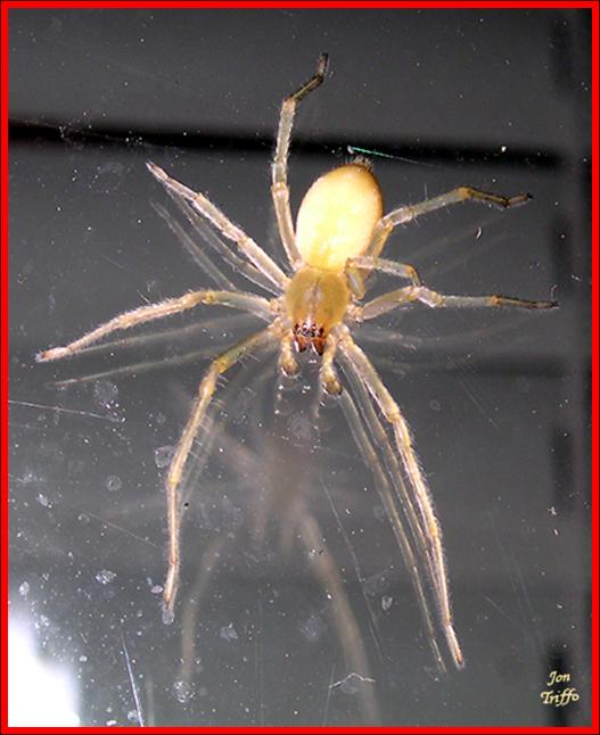
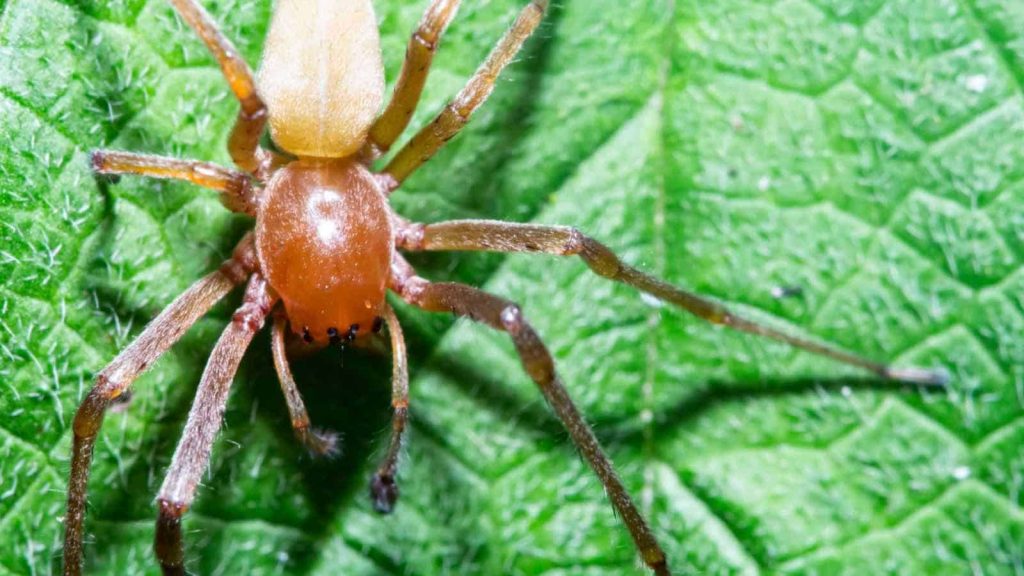
What do yellow sac spiders look like? The yellow sac spider’s appearance differs slightly by species. Cheiracanthium inclusum has a light yellow or cream body, while Cheiracanthium mildei has a greenish abdomen and a yellow head and thorax.
Both species have brown jaws, darker legs, and dark dorsal stripes running vertically across the abdomen. They have eight eyes in two horizontal rows.
Female yellow sac spiders typically range from 5 to 10 millimeters long, while males are 4 to 8 millimeters. The males have darker and more slender bodies. The yellow sac spider has developed scopulae on its feet. These dense hairs help the spider climb and hunt for prey in grasses, trees, and other vegetation.
What do yellow sac spiders eat? This spider is an insectivore that preys on other spiders and non-insect arthropods like cotton plant bugs, fruit flies, fleahoppers, and leafhoppers. It also eats nectar as it forages.
The yellow sac spider’s diet may affect its color. Researchers have observed that the spider has a redder color after eating red-eyed fruit flies and a green hue after eating bright-green lepidopteran caterpillars.
Unlike many spiders, the yellow sac spider doesn’t passively capture prey in a spiderweb. These species actively hunt their prey at night, bringing them into close contact with humans.
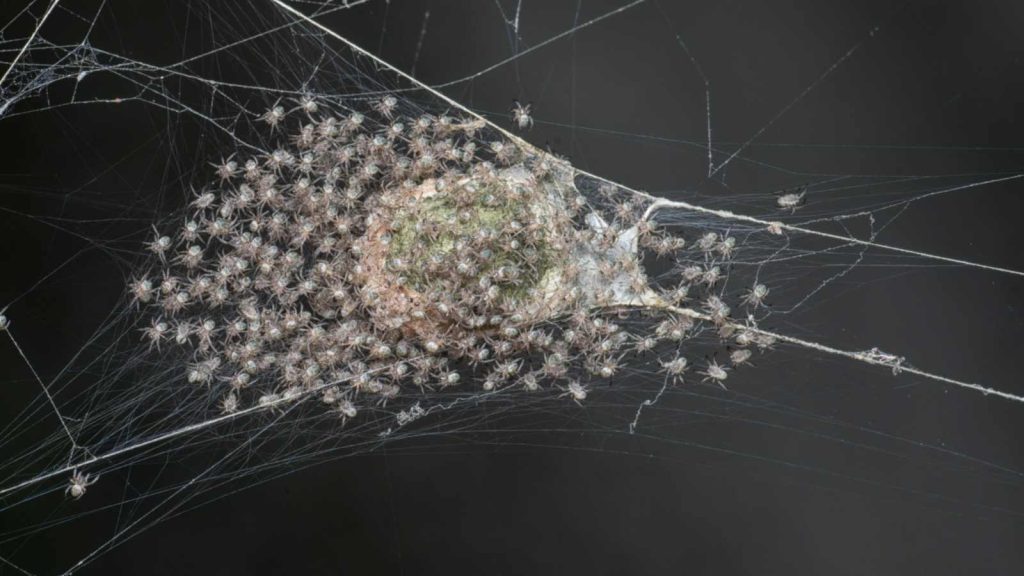
Do yellow sac spiders jump? Yellow sac spiders don’t jump. They move by climbing and scurrying quickly across ceilings, walls, and vegetation. If startled, they may drop a silk line to flee.
What is the yellow sac spider lifecycle? The female yellow sac spider lays eggs around 14 days after mating. The female places the eggs in a silken cocoon and guards them until they hatch. C. inclusum usually deposits its cocoons outdoors under leaves or plants, while C. mildei prefers to lay eggs inside human-made structures.
Once the eggs hatch, the young spiderlings hide in the cocoon during daylight and venture out at night to hunt for prey. They leave the cocoon after around 17 days, and the female spider can lay more eggs. One female spider can produce one to five generations, but the average spider only lays two egg masses.
Male yellow sac spiders mature at 119 days, while females mature at 134 days. Environmental factors like humidity and temperature can affect maturity rates.
Introduction
Sac spiders are found throughout Australia in forest and grassland habitats.
Identification
Slender Sac Spiders make small cylindrical or ovoid silk retreat sacs. They have slender bodies, large jaws and long, thin legs, with the males being especially slender. Most are shades of cream, brown or yellow, with a darker stripe along the upper abdomen. The jaws of the male spider are particularly enlarged.
The Stout Sac Spiders have stronger legs with robust, cylindrical bodies, reddish-brown to fawn in colour, often with chevron patterning on abdomen.
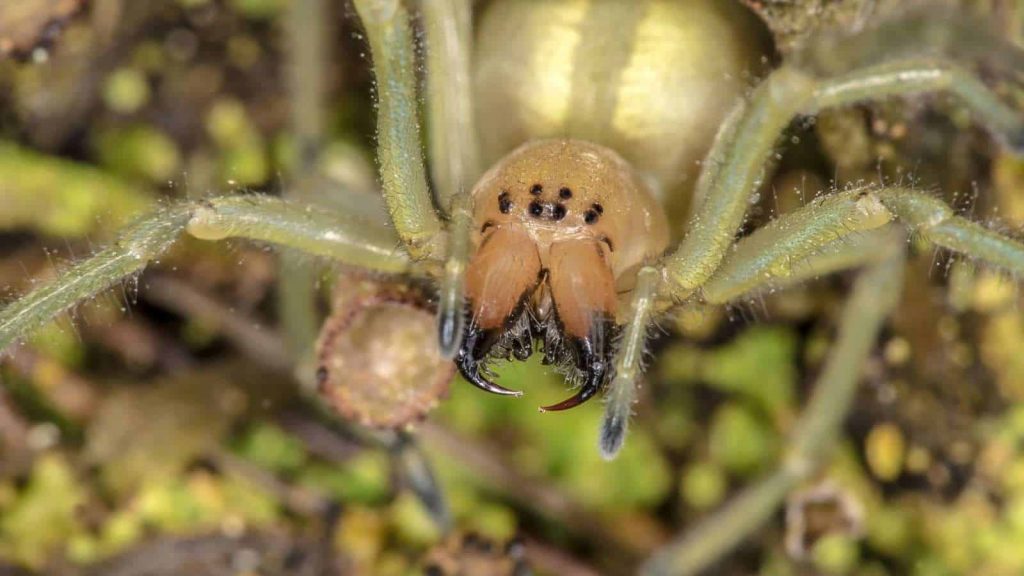
Sac Spider Habitat
Slender Sac Spiders are common hunters on foliage in bush and garden. They make their retreat sacs in folded leaves or grass blades, but sometimes enter houses, building their retreat sacs in wall and ceiling corners. Stout Sac Spiders may be found on house walls and fences but are most common under bark and in leaf litter. Their sheet-like sac retreats are often found under bark.
Earns its name by building small tubes or sac-like nests.
Often mistaken for the brown recluse, but lacks the fiddle on its back.
Although their bite can be painful, it is not medically significant except for allergic individuals.
Lives outdoors in gardens and organic debris, but will access homes in fall to seek warmth. Builds webs where walls meet other walls or ceilings.
Outdoors, sac spiders can be seen in gardens, under vegetation, bark, in rolled leaves, and organic debris. Sac spiders are often shipped in agricultural products such as grapes and can make their way into homes on produce. It is common to see these spiders inside a home during the fall as they begin to seek warmth from the dropping temperatures outdoors. They can easily climb slick surfaces and will construct silk, sac-like retreats wherever walls meet other walls or ceilings.
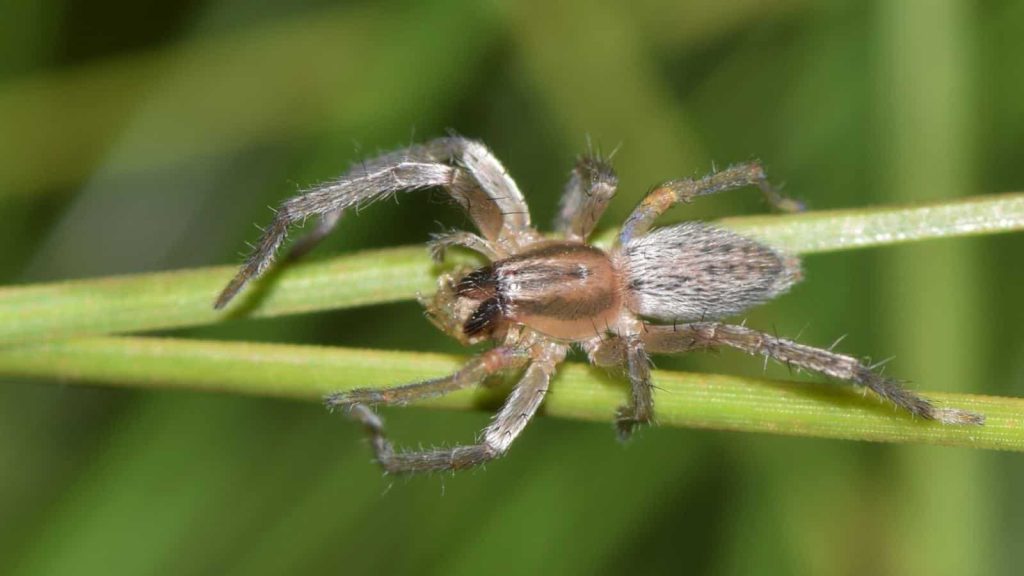
Distribution
Sac spiders are found throughout Australia in forest and grassland habitats.
Sac Spiders in Florida
Sometimes referred to as a “yellow sac spider”, these spiders are often pale yellow in color and have even been known to have a hint or tinge of green. Similar to most spiders, sac spiders prefer to stay away from human contact and typically only find their way indoors by accident. The sac spider is commonly found in homes and is often mistaken for the brown recluse because it is similar in shape, but the sac spider lacks the “fiddle” pattern of the brown recluse. For the most part, sac spiders prefer to feed on a variety of types of spiders along with other garden insects.
Sac Spider Behaviors, Threats, or Dangers
Sac spiders are hunting spiders that use their silk sac only for their retreat or for their egg capsules. They are nocturnal, hunting at night for other insects. The bite of a common sac spider can be misdiagnosed as a brown recluse spider bite. Injuries develop in a similar manner but are much less severe. Although the bite of a yellow sac spider can be painful, it is not medically significant except for allergic individuals. Reactions, such as swelling, slow healing, and ulcerated sores around the bite site, are similar enough to be confusing. If you suspect that you have been bitten by a spider, seek medical attention if symptoms persist or intensify.
Sac spider, (family Clubionidae), any member of a relatively common, widespread family of spiders (order Araneida) that range in body length from 3 to 15 mm (about 0.12 to 0.6 inch) and build silken tubes under stones, in leaves, or in grass. Chiracanthium inclusum, found throughout the United States, is venomous to humans and is often found indoors. Its greenish white to cream-coloured body is about 8 mm long.
Everything You Need to Know About Yellow Sac Spider
Sac spiders are common household pests that are often found in homes and gardens across the world. They are part of the Clubionidae family of spiders and are often mistaken for brown recluse spiders due to their similar appearance. However, unlike the brown recluse, sac spiders are not considered dangerous to humans.
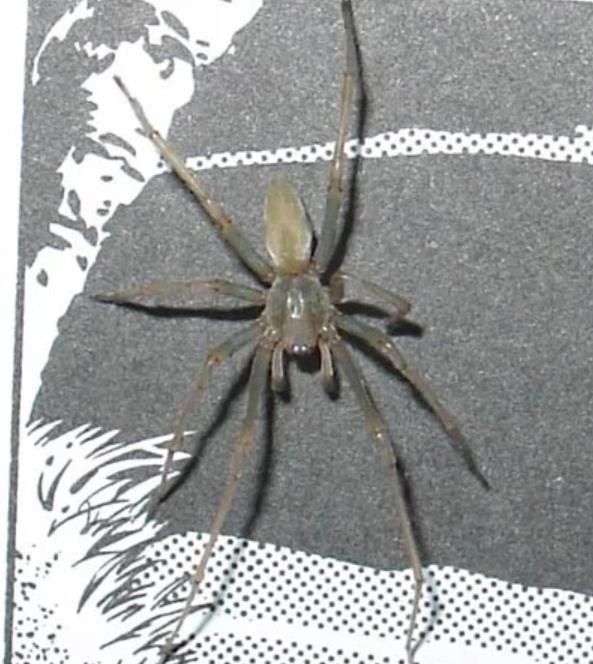
These spiders are named for the sac-like structures they create for resting and reproduction. They are nocturnal creatures and are most active during the night, hunting for their prey. Sac spiders are known to bite when they feel threatened, but their venom is not harmful to humans.
Despite their harmless nature, sac spiders can be a nuisance in the home. They are known to invade houses in large numbers, especially during the autumn season.
What Is The Yellow Sac Spider?
The yellow sac spider, scientifically known as Cheiracanthium inclusum, is a common household pest found across the globe. These small arachnids, usually about a quarter of an inch in size, have a distinct yellow or pale color, hence their name.
They derive the ‘sac’ part of their name from the silken sacs they weave for shelter, often in corners or hidden spaces.
Yellow sac spiders are nocturnal hunters, preying on small insects and other spiders. They don’t build webs to catch their prey but rather roam around, actively hunting. During the day, they retreat to their sacs, hidden in secluded areas.
Lifecycle Of A Yellow Sac Spider
The lifecycle of a yellow sac spider, scientifically known as Cheiracanthium inclusum, is a fascinating journey that begins from an egg. The female spider lays her eggs in a silken sac, hence the name, usually in late summer or early fall. The sac, often hidden in a protected area, can contain up to a hundred eggs. After a few weeks, the eggs hatch into spiderlings, miniature versions of the adult spiders.
The spiderlings undergo a series of molts, shedding their exoskeleton to allow for growth. This process continues until they reach their adult size, which typically happens within a year. Adult yellow sac spiders are nocturnal hunters, using their venom to immobilize their prey.
The lifespan of a yellow sac spider is relatively short, usually around a year. However, the females tend to live a little longer than the males, especially if they have a steady supply of food. During their short life, these spiders can lay several egg sacs, ensuring the continuation of their species.
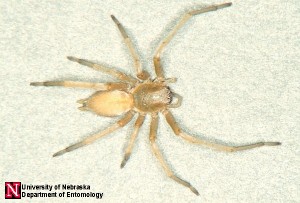
What Do Yellow Sac Spiders Look Like?
Yellow sac spiders are relatively small, typically measuring between a quarter to a third of an inch in length.
They have an elongated body that varies in color from pale yellow to beige, often with a greenish tinge. A distinguishing characteristic of these spiders is their abdomen, which is slightly darker than the rest of their body and often has a faint, chevron-like pattern.
Their legs are longer and slender compared to their body size, and are also of a similar yellowish-beige color. Yellow sac spiders have eight eyes arranged in two rows, with the front row appearing larger and more prominent.
Plus, unlike many other spider species, yellow sac spider do not spin webs. Instead, they create a silken ‘sac’ in which they hide during the day, hence their name. At night, they become active hunters, seeking out their prey.
What Do Yellow Sac Spiders Eat?
Yellow sac spiders, also known as Cheiracanthium inclusum, are common household pests.
Their diet primarily consists of small insects and arachnids. Unlike some spiders that weave intricate webs to capture their prey, yellow sac spider are active hunters. They venture out at night in search of food, using their keen senses and agility to catch their prey unawares.
These spiders are not picky eaters and will consume a wide variety of insects, including flies, moths, mosquitoes, and other small spiders. They are also known to resort to cannibalism when food is scarce, attacking and eating their own kind. Yellow sac spiders play a vital role in controlling the population of insects in our homes and gardens.
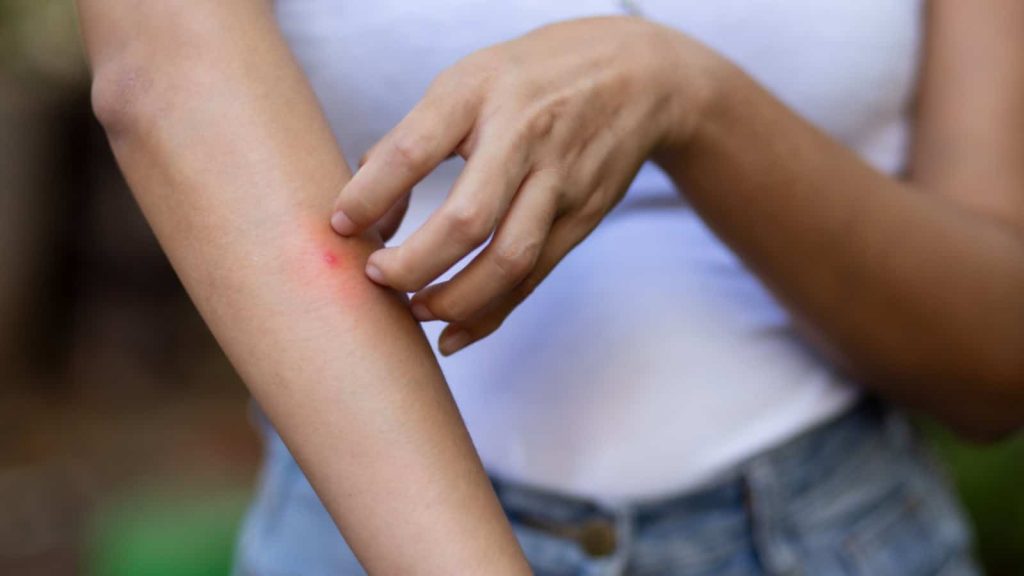
However, it’s important to note that while they are beneficial to our ecosystem, yellow sac spiders are also venomous. Their bite can cause minor skin irritations and discomfort.
Therefore, while they help control pests, it’s essential to handle a yellow sac spider infestation appropriately to avoid any unpleasant encounters.
Do Yellow Sac Spiders Jump?
One frequently asked question is, “Do yellow sac spiders jump?” The answer is no, Yellow Sac Spiders are not known for their jumping abilities. Unlike their counterparts such as Jumping Spiders, Yellow Sac Spiders are more likely to run than jump when threatened or hunting prey.
These spiders are nocturnal and spend their days in silken retreats, which is why they are called ‘sac’ spiders. They venture out during the night to hunt for their prey, which mainly consists of small insects.
Although they do not possess the ability to jump, they are excellent climbers, which aids them in catching their prey and avoiding predators.
Types Of Yellow Sac Spiders
Yellow sac spiders belong to the Cheiracanthium genus and are typically divided into two main types: Cheiracanthium inclusum and Cheiracanthium mildei.
Cheiracanthium inclusum, also known as the agrarian sac spider, is native to North America. It’s commonly found in fields and gardens, hence its name. This spider is known for its nocturnal habits and the distinctive sac-like web it spins for shelter.
On the other hand, Cheiracanthium mildei, or the northern yellow sac spider, hails from Europe but has successfully colonized many parts of the world, including North America. This spider is often found indoors, in wall crevices, or behind furniture.
Both types of yellow sac spiders are known for their mildly venomous bite. While not deadly to humans, a bite can cause local pain, redness, and swelling.
Where Do Yellow Sac Spiders Live?
Yellow sac spiders, scientifically known as Cheiracanthium inclusum, are versatile arachnids that can adapt to a wide range of environments. They are primarily found in North America, but their distribution is worldwide.
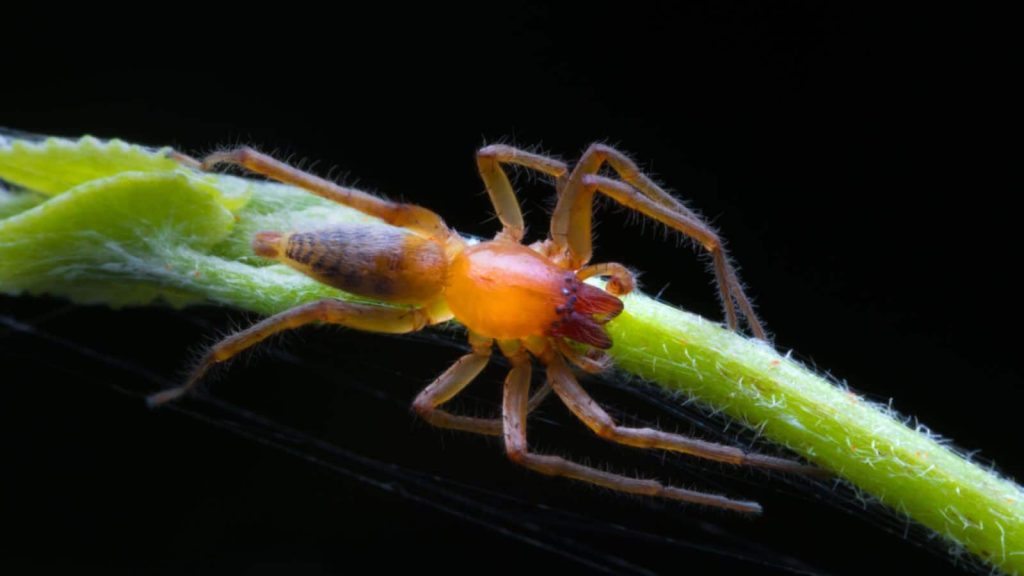
These spiders prefer to live in warm, dry climates, and are commonly found in gardens, fields, forests, and even inside homes.
In outdoor settings, yellow sac spiders typically inhabit plants, trees, leaves piles, and under rocks. They are nocturnal creatures, hiding in their silken sacs during the day and hunting for prey at night.
Within homes, they can be found in corners, behind furniture, in wall cracks, and other undisturbed areas. They are particularly attracted to white or light-colored walls, as these mimic their natural outdoor habitat.
Despite their intimidating appearance, yellow sac spiders are not aggressive towards humans. However, they will bite if they feel threatened or trapped. Therefore, it’s essential to maintain regular pest control measures to keep these spiders at bay.
Remember, a well-informed homeowner can effectively manage these unwanted guests, ensuring a safe and comfortable living environment.
Signs You Have Yellow Sac Spiders
Yellow sac spiders are small arachnids that often invade homes in search of food and shelter. Recognizing their presence early can help you take effective pest control measures.
One of the primary signs of a yellow sac spider infestation is the sight of the spiders themselves. They are pale in color, ranging from yellow to beige, and can be identified by their cylindrical abdomen.
Another telltale sign is their distinctive webbing. Unlike the intricate patterns of other spiders, yellow sac spiders spin loose, irregular silk tubes or sacs. These are typically found in corners, behind furniture, or in other undisturbed areas of your home.
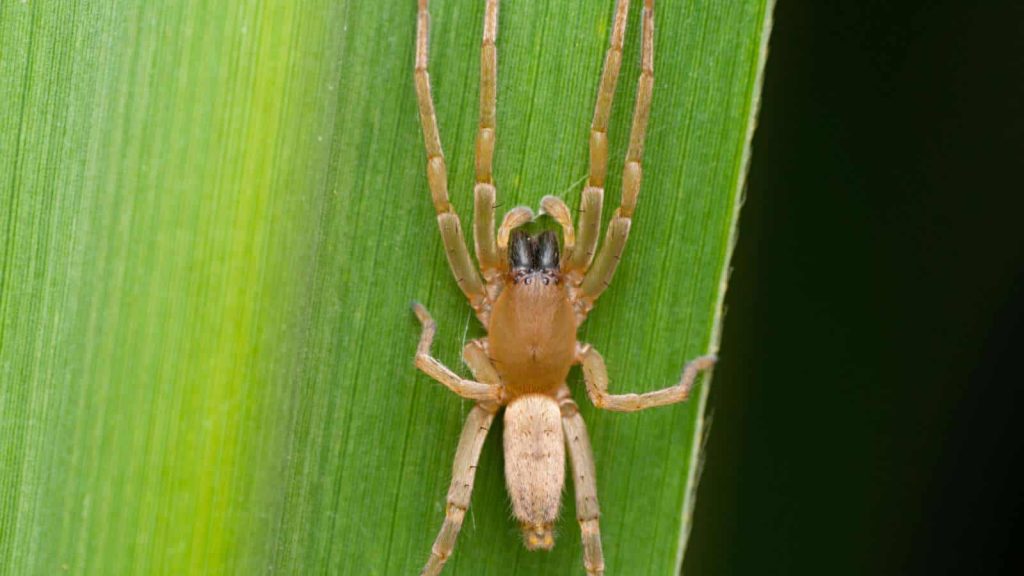
You may also notice small, round egg sacs, which are often hidden within the spider’s webbing. Each egg sac contains dozens of tiny spiderlings.
Plus, unexplained, tiny bites on your skin could suggest their presence. Yellow sac spiders are known to bite when they feel threatened or trapped. However, their venom is not harmful to humans.
If you notice any of these signs, it’s high time to seek professional pest control assistance.
Why Do You Get Yellow Sac Spiders?
Yellow sac spiders, known for their distinctive yellowish hue, are common household pests. But why do you get them?
These spiders are attracted to warm, cozy environments, and your home provides the perfect sanctuary. They thrive in areas with high insect populations, as they feed primarily on other small bugs.
Yellow sac spiders are nocturnal creatures, coming out at night to hunt. During the day, they hide in their silk sacs, hence the name. These sacs are often found in corners of walls, ceilings, behind furniture, or in other undisturbed areas of your home.
Their presence may also indicate an underlying issue with other pests. If your home has a high population of insects, it can attract these spiders. So, getting rid of yellow sac spiders may involve addressing other pest issues as well. .
Health Risks Of Yellow Sac Spiders
Yellow Sac spiders, known for their pale color and nocturnal habits, pose potential health risks that are often overlooked. Although not inherently lethal, their bites can cause significant discomfort and potentially serious complications if not treated promptly.
The initial bite from a Yellow Sac spider may seem relatively harmless, often mistaken for a mosquito bite. However, within a few hours, the bite site can become red and swollen, accompanied by a stinging sensation.
In some cases, victims may experience systemic reactions, such as fever, malaise, muscle cramps, and nausea.
The primary health risk associated with these spiders is the potential for secondary infection. If the bite wound is not cleaned and cared for properly, bacteria can invade, leading to cellulitis or even systemic infections.
In rare cases, necrotic lesions similar to those caused by brown recluse spiders have been reported.
Therefore, it is crucial to seek medical attention if bitten by a Yellow Sac spider, especially if symptoms persist or worsen.
Do Yellow Sac Spiders Bite?
Yes, Yellow Sac Spiders do bite.
While they’re generally non-aggressive towards humans, Yellow Sac Spiders will bite if they feel threatened or cornered. The bite, though not lethal, can be quite painful, similar to a bee sting.
It may cause localized redness, swelling, and sometimes, a mild fever. The discomfort usually subsides within a week, but if symptoms persist, it’s advisable to seek medical attention.
Remember, Yellow Sac Spiders are more interested in catching their insect meals than biting humans. However, it’s crucial to be cautious when dealing with these spiders or any other pests in your home. Consider seeking professional pest control services if you notice an infestation, to ensure your home is safe and pest-free.
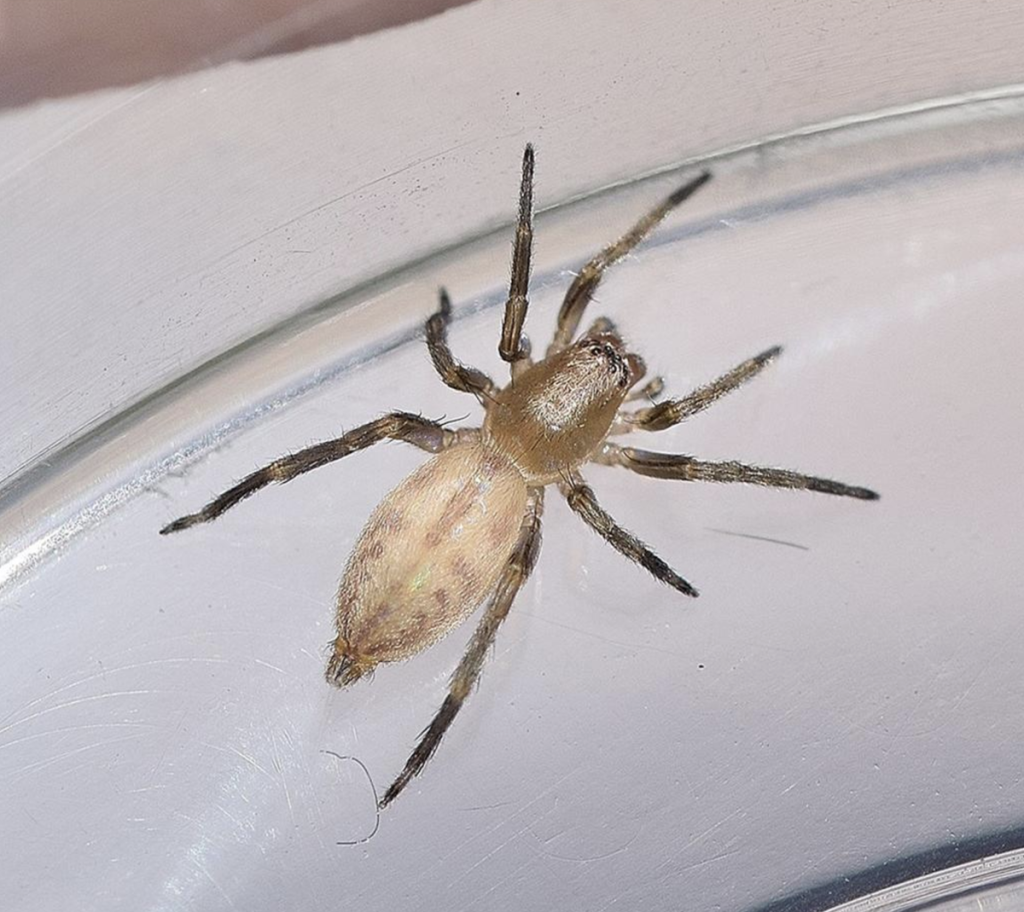
What Do Yellow Sac Spider Bites Look Like?
Recognizing a yellow sac spider bite is the first step in proper treatment and prevention.
Typically, a bite from this spider manifests as a mildly painful, raised red welt, similar to a mosquito bite. It might be accompanied by itching or slight swelling.
Unlike other spider bites that may have two puncture marks, yellow sac spider bites usually have a single puncture point at the center of the welt. In some cases, the skin around the bite may turn yellowish or necrotic, indicating a more severe reaction. However, this is relatively rare.
It’s important to remember that individual reactions can vary based on a person’s immune response. Some people may experience symptoms such as fever, malaise, or muscle cramps.
How To Treat Yellow Sac Spider Bites
Yellow Sac spiders are common in many homes, often hiding in wall corners or behind furniture. Though their bites are generally not fatal, they can cause discomfort. If you’ve been bitten, it’s essential to know how to treat it effectively.
Firstly, clean the bitten area with soap and water to prevent infection. Apply an ice pack to reduce swelling and numb the pain. Over-the-counter pain relievers and antihistamines can also help manage symptoms.
If you notice an increase in pain, redness, or pus, seek medical attention immediately as these could be signs of an infection.
In most cases, Yellow Sac spider bites heal on their own within a week. However, prevention is always better than cure. Regular pest control, sealing cracks and crevices, and keeping your home clean can significantly reduce the chances of encountering these spiders.
Yellow sac spiders (Cheiracanthium inclusum and C. mildei)
The following is taken from the Pennsylvania State University, Department of Entomology web site entitled, Commonly Encountered Pennsylvania Spiders (and two rarely encountered but medically important species).
Yellow sac spiders can be found walking about on foliage; under leaf litter, stones, and boards; and on buildings under the window sills and siding, in addition to the corners of walls and ceilings within homes. They probably account for more spider bites than any other spider and their bites are sometimes misdiagnosed as brown recluse bites by health care providers. C. inclusum is indigenous to much of the United States (except the northernmost states), while C. mildei, an introduced species from Europe, was found throughout much of the Northeast as of 1978. It is likely that C. mildei has substantially increased its range since that time.
Description: Both species are of similar size (females 5-10 mm; males 4-8 mm) and coloration. C. inclusum is a light yellow to cream color, with the jaws (chelicerae), tips of the tarsi, and palps dark brown. C. mildei has a slightly greenish tinge to its abdomen and a pale yellow cephalothorax. The chelicerae, tarsi, and palps are similar to those of C. inclusum. Both spiders have a slightly darker dorsal stripe running lengthwise across the abdomen.
Yellow sac spider retreats may be found outdoors under objects or indoors in the corners of walls and ceilings. These retreats are silken tubes or sacs in which the spiders hide during the daytime. In homes with light, neutral-colored walls and ceilings, the retreats may go unnoticed, as they are small and blend in with the background coloration.
Life History: Yellow sac spiders deposit their eggs in June or July. The eggs are loosely deposited within a silken retreat, and the female remains nearby to guard them. C. inclusum is more often encountered outside; the majority of these spiders deposit their eggs on the undersides of leaves or other foliage. C. mildei is more often encountered within man-made structures and oviposits almost exclusively indoors. The young spiderlings will often remain within the silken retreat for a short period and eventually venture out at night in search of food. The young will frequently return at daybreak to hide within the protection of the retreat.
Yellow sac spiders are “active hunters,” searching for prey rather than capturing it within a web. It is during these nighttime forays that the spiders encounter humans and bite when they become trapped between a person’s skin and sheets, clothing, shoes, and the like.
Medical Importance: The yellow sac spiders probably account for more human bites that any other type of spider. The bite of C. inclusum is more destructive then the bite of C. mildei. Humans usually incur C. inclusum bites outdoors while gardening in the summer. C. mildei will readily bite, despite their small size, and they have been observed crawling across the human skin surface and biting without provocation. Fortunately, most bites are relatively painless and do not result in any serious medical conditions. For C. inclusum victims and some individuals sensitive to C. mildei, the bites will exhibit the symptoms described below.
The bite is usually very painful at the outset, with developing erythema, edema, and pruritus. The burning sensation associated with the bite will last for up to an hour, with rash and blistering occurring during the next 1-10 hours. Some patients may exhibit systemic reactions with fever, malaise, muscle cramps, and nausea. These symptoms are similar to black widow bite symptoms but are much less severe. A necrotic lesion and ulceration may also occur at the site, but this is less serious than the similar symptoms that accompany a brown recluse bite, and it usually does not result in scarring.
